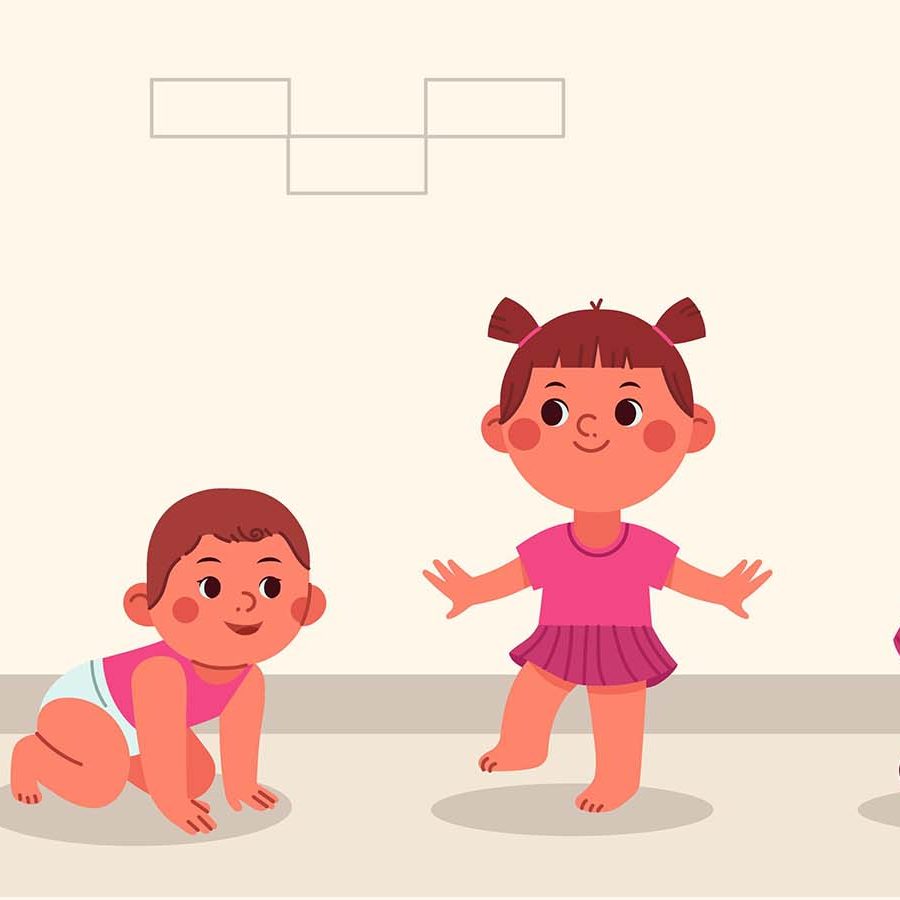As a parent, unlocking the full potential of your growing child is a top priority. Understanding the essential milestones in childhood development stages is key to nurturing their cognitive, emotional, and physical growth.
As you probably know, children develop different sections as they grow older. The combination of all results in their ability to interact with others, communicate their needs and explore the world around them.
By recognizing and supporting these milestones, you can provide the necessary environment for your child to thrive.
Why Are Childhood Development Stages Important?
Understanding the various stages of childhood development is crucial for parents as it provides valuable insights into their child’s growth and progress.
These stages serve as benchmarks, helping parents recognize and support their child’s development in different sectors of their lives.
By being aware of these milestones, parents can ensure their child is on track and address any concerns early on. Ultimately, keeping track of the milestones of each development stage is crucial for parents looking to foster a healthy and happy upbringing.
Identifying when help is needed
Meeting developmental milestones on time is often linked to better academic performance, social skills, and mental health later in life.
Delay or difficulty in meeting development stages are early signs that specialized intervention might be of need. According to the Center for Disease Control and Prevention, parents are advised to look for help as soon as they notice something might be off with their child.
The auxiliary help might come in the form of speech or physical therapy. An early diagnosis of a condition such as autism also allows parents to equip themselves with the necessary resources to support their child the best way they can.
By staying informed about these stages, parents can proactively engage with healthcare providers and educators to support their child’s unique developmental journey.
What Are The Main Areas That Mark Childhood Development?
While the Little Ones are developing various skills at once, there are five main areas that encompass their development. Naturally, many milestones associated with their growth are included within these four sectors: communication and speech; physical; social/emotional; and cognitive domains.
The moment a baby is born, they are creating connections and making sense out of this new, bright and loud setting. The first years of their lives actually can actually have an influence on their capacity to adapt in the future ahead.
Childhood Development Stages According To Each Stage
Although official health institutions such as the American Academy of Pediatrics keep track of different milestones in various moments of a baby’s life, there are a few key stages that take place in a specific age range.
There might be slight variations, but the overall agreement lists the following ages and stages:
0 to 2 months old: newborn
- Can calm down when soothed or picked up
- Looks and holds their gaze at parents
- Responds positively at parents and other when softly spoken to
2 to 12 months old: infant
- Chuckles and laughs when stimulated
- Moves or make sounds to get parents’ attention
- Recognizes familiar faces
- See and act intrigued when seeing their reflection in the mirror
- Can feel a bit uncomfortable around strangers when they meet for the first time
- Recognizes their own name when called
- Has more facial expressions, such as sad, happy, surprised or angry
- Responds to games like peek-a-boo
- Roll over and can stand in sitting position by themselves
- Can walk when supported by other or holding to furniture
- Reacts with when parents are next to them and leave (by crying, or looking to the direction parents are going)
1 to 3 years old: toddler
- Can show parents objects they like (by pointing in its direction or holding it)
- Can feed themselves
- Already walk autonomously and know how to run, jump and walk backwards
- Copies other child near them
- Recognizes and can name colors or objects
- Show affection for parents and close family
- Looks at book pages when parents read to them
- Reacts to people’s emotions
- Plays with their children or next to them
- Tries to get parents’ attention
- Understands and responds to simples commands, like “time to wash up for dinner”
3 to 5 years old: preschooler
- Is able to quickly calm down after parents leave (taking no more than 10 minutes after the goodbye)
- Likes to play with other children and is able to approach them to join in
- Recognizes emotion and can respond to them (hugging or kissing people who are feeling sad)
- Likes to participate in family rituals and routines
- Can draw simple objects like circles and squares, and stick figures
- Understand the concepts of time (i.e. afternoon, morning and night) and size (big or small)
- Starts to recognize written words (like their own name)
- Can adjust their behavior to the place they are (keeping quiet in a hospital or library)
- Recognizes dangerous situations and tries to avoid them
- Role plays during games and playtime (pretending to be a character or having a certain profession)
How Can Parents Stimulate Childhood Development Milestones?
As parents become more conscious of their child’s growth patterns and needs, they can foster a nurturing and responsive environment. As a result, this attentiveness not only promotes a child’s sense of security and confidence but also enhances their emotional and social development.
Ultimately, parents that are participative and enthusiastic about each small accomplishment the baby achieves will likely provide appropriate stimuli for the child according to their stage.
Here are a few strategies according to each growing phase.
- Newborns: tummy time; talking and singing; keeping physical contact with the baby and showing them different feelings and expressions that denote each emotion.
- Infant: reading age-appropriate books together; playing peek-a-boo or games tha require the child to stretch out and grab for something;
- Toddler: building blocks; games that enhance listening and paying attention, like Simmon Says; playtime that involves investigation or exploration of the ambience they’re in; positive feedback when the child does something right to build their self-confidence.
- Preschool: playtime with arts and crafts; role-playing; reading together and encouraging the child to participate in the story (anticipating the next step or telling you what lesson they got from it); lots of outdoor playing to stimulate motor skills and overall health.
Being aware of childhood development stages is vital for every parent. It empowers them to support their child’s growth effectively, ensuring a healthy and balanced development. Continue your journey into becoming the best parent your child could ever want and learn how preschool can impact your Little One’s future.


